Impact Statement
-

Coronavirus Economic Impact Statement Form Template
download now -

Impact Statement Example
download now -
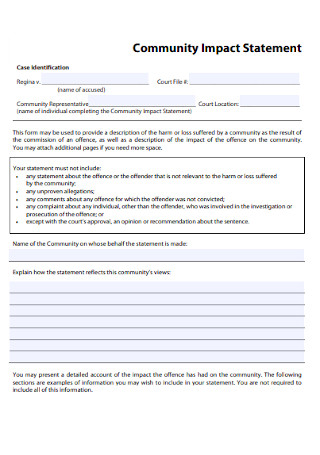
Community Impact Statement
download now -
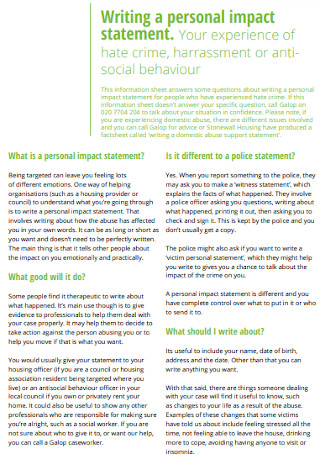
Personal Impact Ptatement
download now -
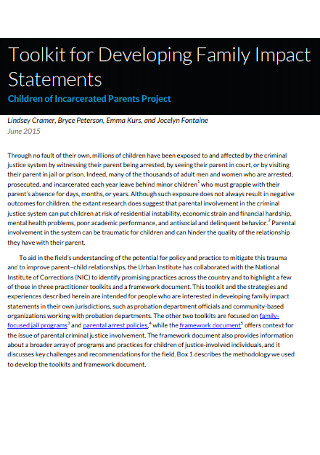
Family Impact Statements
download now -
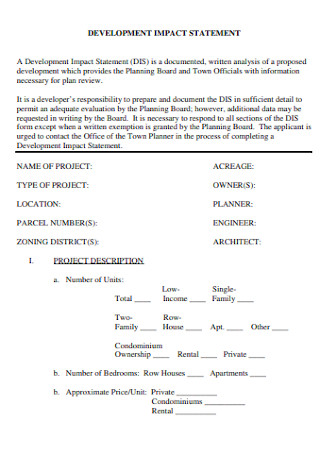
Impact Development Statement
download now -
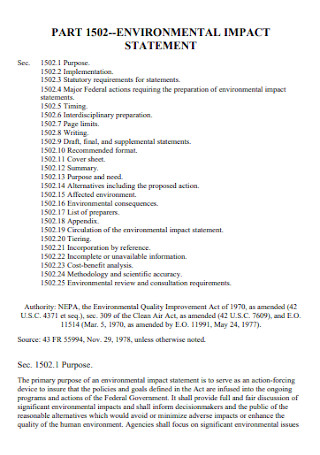
Environmental Impact Statement
download now -
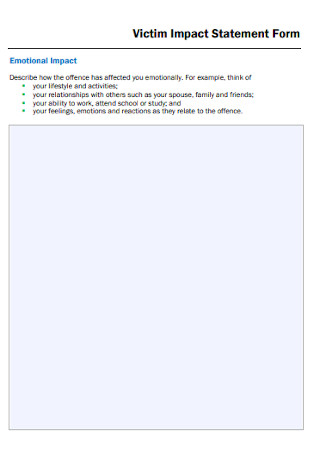
Victim Impact Statement Form
download now -
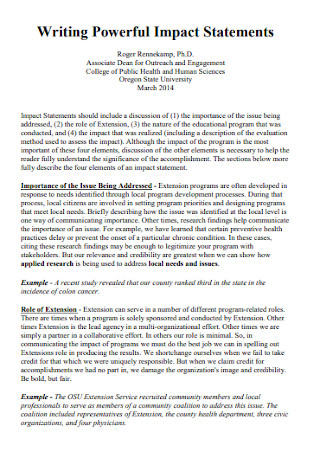
Writing Powerful Impact Statements
download now -

Thesis Impact Statement
download now -
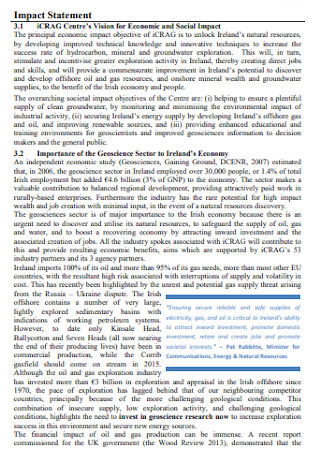
Programme Impact Statement
download now -
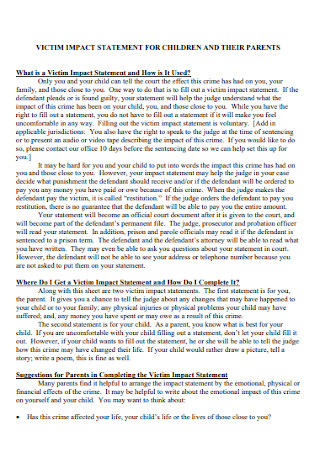
Impact Statement for Children
download now -
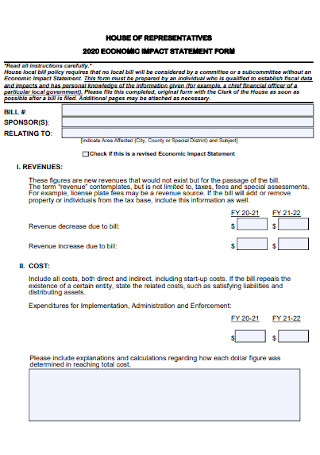
Economic Impact Statement Form
download now -

Assessment and Impact Statement
download now -
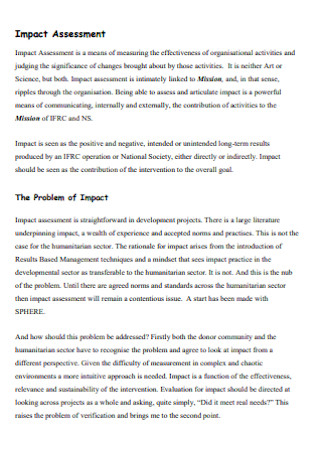
Simple Impact Assessment Template
download now -
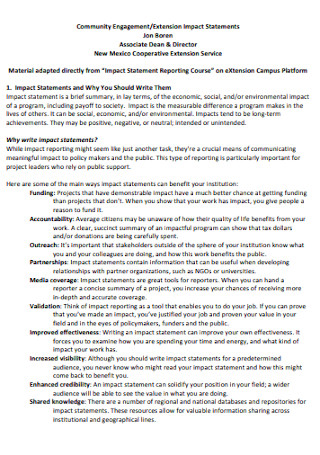
Extension Impact Statements
download now -
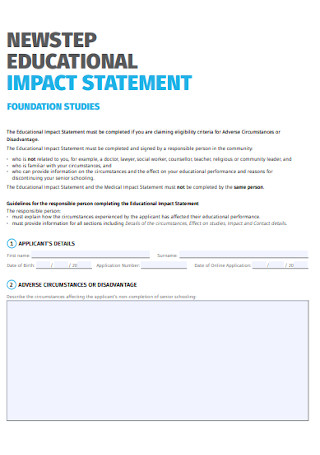
Educational Impact Statement
download now -
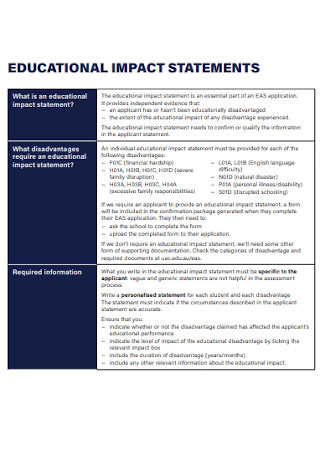
School Educational Impact Statement
download now -

Financial Impact Statement
download now -
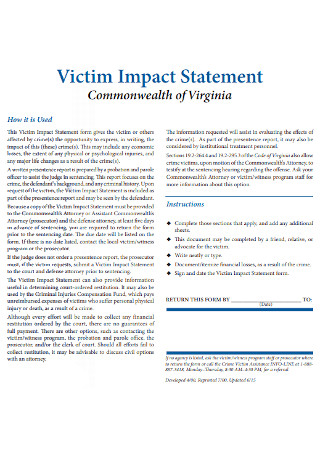
Victim Impact Statement
download now -
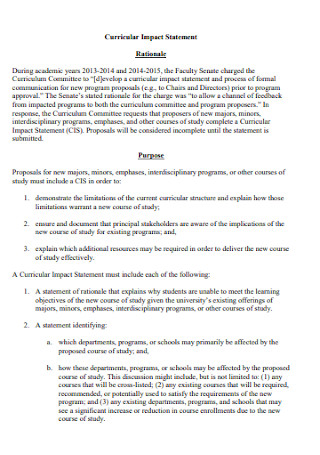
Curricular Impact Statement
download now -
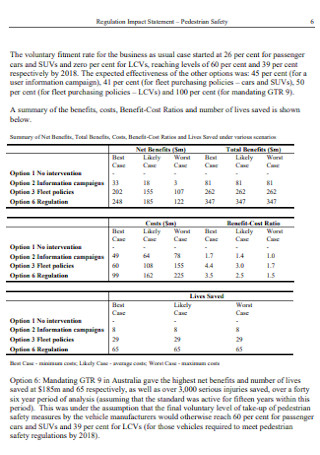
Regulation Impact Statement
download now -
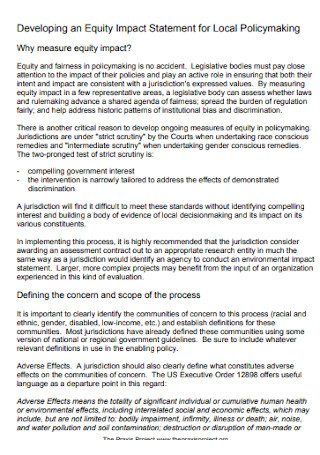
Impact Statement for Local Policy Template
download now -
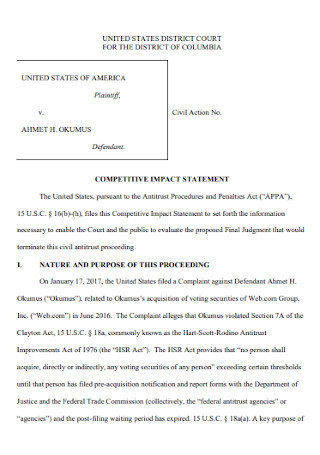
Compititive Impact Statement
download now -
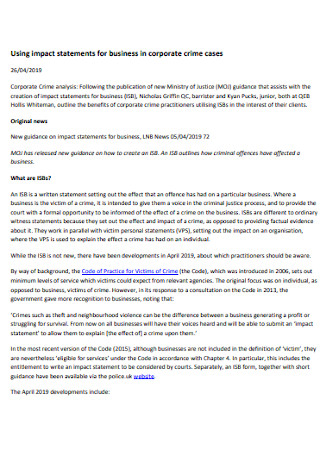
Impact Statements for Business
download now -

Planning and Impact Statement
download now -

Medical Impact Statement
download now -
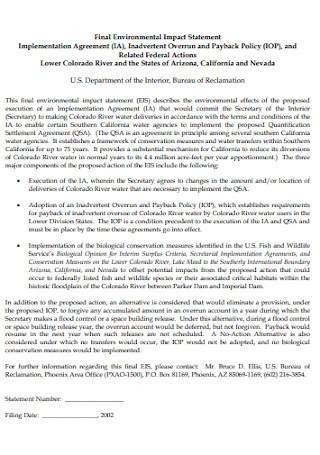
Final Environmental Impact Statement
download now -
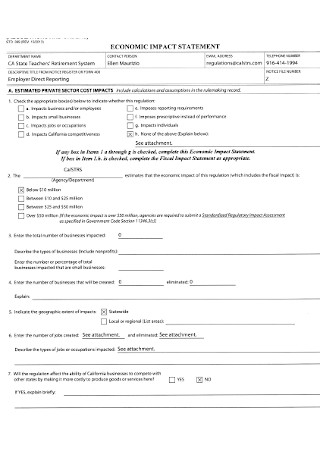
Economic Impact Statement Template
download now -
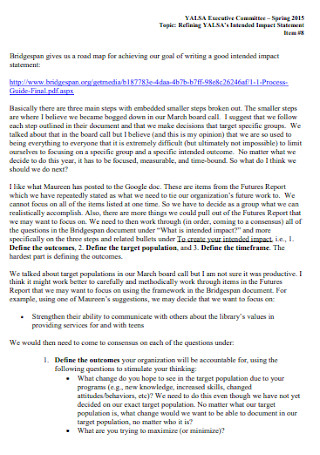
Intended Impact Statement
download now -
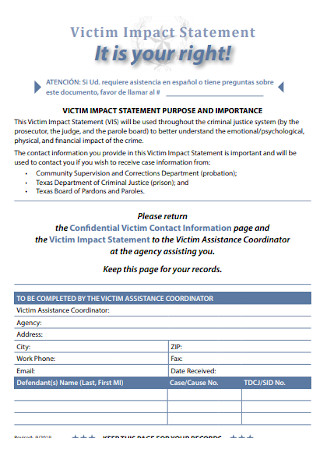
Victim Impact Statement Example
download now -
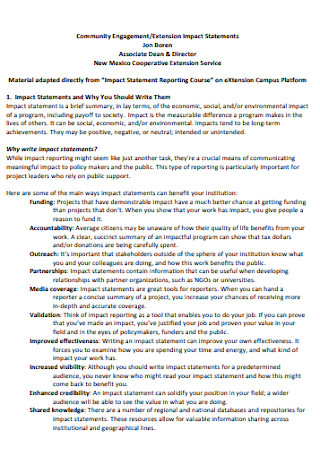
Extension Impact Statements Template
download now -
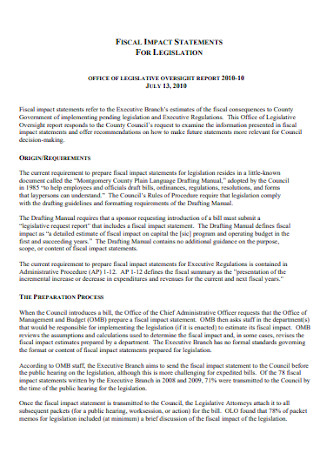
Fiscal Impact Statement Template
download now -

Impact Statement Format
download now -
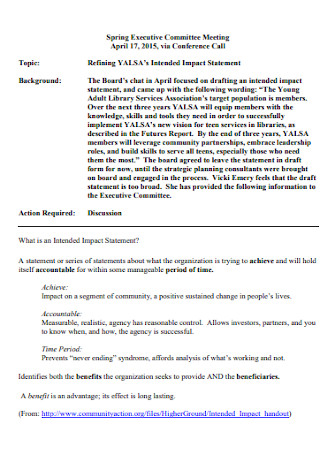
Basic Impact Statement Template
download now -
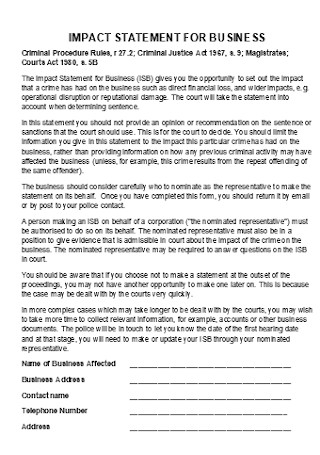
Impact Statement for Business Template
download now
FREE Impact Statement s to Download
Impact Statement
What is an Impact Statement?
Key Components of an Impact Statement
How to Write an Impact Statement
How Important are Impact Statements?
Tips in Writing an Impact Statement
FAQs
Who needs to submit an impact statement?
Who are these stakeholders?
Can external reviewers read impact statements?
What is an Impact Statement?
An impact statement is a tool that’s used to show the value of social, environmental, and educational programs to influence the decision-makers or those who are responsible for deciding about program resources. It’s a short document that’s used to explain the significance and importance of the research work plan about a certain topic.
Often, researchers and students use impact statements to answer questions related to the significance of their research study plan to the current body of knowledge in the field they are investigating or to describe the socioeconomic and environmental outcomes of their studies. The impact statement is specifically written to inform stakeholders about the current state of their field or industry and to convince them of the best way to address issues and concerns of the organization or the community.
The impact statement is typically used by different stakeholders—policymakers, lobbyists, advocates, and other individual parties involved. This document should explain the different impacts of the program on different levels and justified why there is a need for researchers to further the current study. This means that the impact statement could also possibly help facilitate the development of new programs or in the approval of new impact studies research or grant applications in the field.
A high-impact statement will allow your readers to determine the problem that the organization helped solve or address the actions and programs made to address the problems, and the outcomes of the efforts made.
Key Components of an Impact Statement
As an Executive summary and written in lay terms, an impact statement describes the personal, economic, environmental, and social impact of efforts done. It should state the accomplishments and payoffs of projects and programs so it should still be comprehensive. Impact statements often follow a certain guideline to ensure that it has complete and correct information. Typically, impact statement examples follow these five sections.
How to Write an Impact Statement
Impact statements are used to demonstrate the importance of the work that was done and these are usually shared with members of the decision-making body and other stakeholders. This is why it’s important that one knows how to write a highly effective impact statement.
Step 1: Write a Brief Summary
Before you begin writing your impact statement, it is best that you write a summary of the events. This will help you fill out the necessary details for your impact statement. You have to ensure that it reports the documented impact of the intervention and program implemented or the research that was conducted. These should describe the positive changes in the social, economic, and environmental conditions in the community.
Step 2: Describe the Problem
Usually, the statement of the problem from the program or intervention that was implemented. This section explains the relevance of the program in simple terms that’s appropriate for your targeted audience. In describing the problem, it should be able to clarify the following:
- The needs that were expressed in the community
- The situation in the community and why it’s considered a problem
- The interventions and programs that were implemented
- The importance of the research, programs, or interventions
Step 3: Provide an Action Statement
This refers to your response to the problems stated. This should answer the questions:
- What did you do to address the problem?
- What were the key elements in your project?
- Who were the target beneficiaries of the program?
- What types of resources were used or expended during its implementation?
Step 4: Assess the Impact
In this section, the impact of your work is assessed. This should answer the question of the work that was done actually pays off and compensates for the benefits gained socially, economically, and environmentally. You should be able to illustrate what happened to the beneficiaries in the community or organization once the program or the intervention was implemented. It should be able to describe the following:
- Knowledge or skills gained
- Practices and behavior changed
- Financial situation—money saved, expended
- Policies changed
- The quantitative and qualitative result
Step 5: Identify the Stakeholders and Collaborators
List all your collaborators and contributors other than yourself. Their contribution to the study should be evident and their level of involvement stated so the stakeholders will have a clearer picture of the situation in the community.
Step 6: Leave Your Contact Details
Stakeholders would want to know how to be able to reach you once they made a decision or if they have any further clarifications about the impact of the study or program. This is why you should clearly describe your background and your involvement in the study.
How Important are Impact Statements?
Impact statements can be used in just about any field and by anyone and about anything that has a socioeconomic and environmental impact like business organizations, academe, nongovernmental and non-governmental organizations, among others. This document is used in the decision-making process and in crafting new policies surrounding programs to alleviate socioeconomic conditions of the community and other stakeholders and even in the justice system.
Victims Impact Statement
In court, 80% of judges use victim impact statements to determine the sentence to convict an offender. There is little evidence that shows the ability of the victim to recall details negatively influences the sentence that the judge’s prosecutorial decision. This means that their decisions do not become less lenient or severe because the victim was able to recall more details or information about what happened.
Environmental Impact Statement
When major federal actions are determined to have a significant effect on the environment and quality of human condition, federal agencies are required to create an environmental impact statement. This statement will include an explanation about the agency’s decision, the alternatives that were considered, and a discussion of the agency’s plan of action in mitigating and monitoring these environmental and socioeconomic impacts, if necessary.
Social Impact Statement
Typically made by companies and corporations, a social impact statement is a document that outlines the qualitative commitment of the firm when it comes to different social issues. It details the values and priorities of the corporation and the facts and figures of the programs that they implemented. It helps corporations become more popular among their investors who are looking for companies with high environmental, social, and governance (ESG) ratings.
Public Health Impact Statement
When a community-based non-governmental organization wishes to submit health services applications, they are required to comply with the public health system reporting. One of its requirements is a public health impact statement or a summary of the results of the intervention, program, or policy that contributed to the changes in health, behavioral, and environmental outcome. This document also includes information about the population they wish to serve, a summary of their services, and a description of the coordination plans with the appropriate agency.
Tips in Writing an Impact Statement
Here are some useful tips to help you write a high and strong impact statement.
Think About Your Audience
When writing your impact statement, make sure that you use layman words. Avoid industry or field jargon so your readers can easily understand what the impact of your study is. Your readers may not be experts in what you do and they need to be able to understand it to convince them that what you’re doing is important. For it to be more interesting to them, you should focus on how the study or the program benefits the community as a whole and not just on the knowledge contribution in the field.
Use Facts and Statistics to Illustrate Your Point
Help your readers understand the impact of your work better by using numbers and statistics. For example, show them how many people benefitted from the program and how many more received help because of it. It will also add more layers to your statement to show the duration of the work you do. In short, these numbers will help your readers understand the significance of your work.
Remember KISS – Keep It Short and Simple
The best way to make your statement is to keep it short and simple. It does not need to contain all the details of your research or program. It is enough that your statement briefly describes your work without compromising the quality of the document. It should still be able to serve its purpose and help the stakeholders decide on the changes that will be made based on the impact statement.
Always Proofread Your Impact Statement
Once you’re done writing your impact statement, like any other document you write, always make it a habit to proofread your work. Bear in mind that this document will land in the hands of people who will make important decisions about the work that you do. It will influence the policies they will craft and changes to be done in the organization or the community. You can also have someone else proofread your work for double-checking and to avoid any other unnoticed mistakes or typographical errors.
FAQs
Who needs to submit an impact statement?
Anyone can submit an impact statement especially those who feel that their work can significantly improve the lives of the people in the organization, community, and even on the individual themselves. It is always useful to document professional challenges that have impacted opportunities, productivity, performance, and trajectory of anyone and this can be done through an impact statement.
Who are these stakeholders?
Stakeholders are often the people in charge of allocating funds—university administrators, grant program facilitators, or government policymakers. Therefore, it justifies why researchers need to further their current research or pursue a new area of interest.
Can external reviewers read impact statements?
Yes, impact statements can be shared with external reviewers should you decide to do so. They can use the information that you provided so they can contextualize their assessment of the problem and the programs and interventions used to address them.
When writing an impact statement, keep in mind that it should concisely capture the essence of your work. An impact statement illustrates your ability to convey to your stakeholders the significance of the work that you do. It is important that your document give an accurate depiction of the situation before, during, and after the implementation of the programs or interventions used to address the issues in the community or the organization. This should be able to improve knowledge and adoption of best practices to help individuals increase their level of socioeconomic quality of life.
